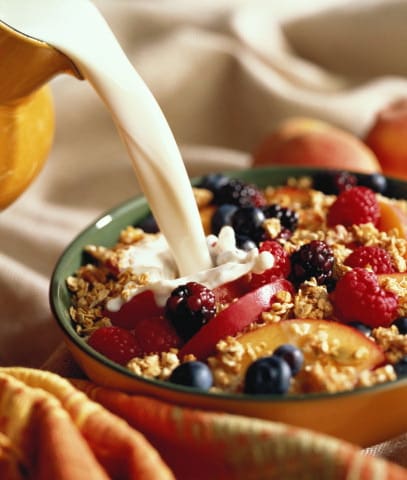Breakfast: A Good Idea
If you’re not already doing it, one of the best ways to start making healthier changes to your lifestyle is by eating breakfast. Breakfast has been shown to increase metabolism and improve mental function. Consuming breakfast gives you the opportunity to squeeze in extra fiber and it can help meet your daily recommended intake for all four food groups. Breakfast can also help prevent overeating throughout the day. Research has shown that people who are able to lose weight and keep it off are individuals who incorporate breakfast on a daily basis.
What’s holding you back? Often times, people skip out on breakfast due to lack of time in the morning. There are a variety of ways to help you incorporate a healthy breakfast without sacrificing too much of your precious sleep.
1. Set your alarm clock 10 minutes earlier to allow you to squeeze in time to prepare and eat your breakfast (it doesn’t take too much time to eat a couple pieces of toast with some peanut butter)
2. Keep it simple. If you’re not used to eating breakfast, choose something easy to prepare, such as cereal. Have a plan for what you are going to eat in the morning so that you don’t have to think about it when your alarm goes off
3. Pre-make your breakfast in the morning and take it with you on your way to work
4. Have breakfast items already at work or stashed in your work fridge ready for you to eat (My favorite breakfast at work is using instant oatmeal packets. I microwave my oatmeal with skim milk in a container and add a fruit that I bring from home)
Another reason why people choose not to have breakfast is to help them lose weight. People often think that skipping meals will help decrease their overall caloric intake; however, it may do just the opposite. Skipping meals may cause you to overeat throughout the rest of the day and into the evening. Unfortunately, this will most likely lead to weight gain. Also, when we skip meals, this may cause us to crave fat and sugar due to uneven blood sugar levels. When our blood sugar starts to get low, the temptation to eat treat-like foods, such as donuts, chocolate bars, etc., becomes even stronger.
Here are some key breakfast guidelines to get you going:
1. Aim to eat within 45 minutes of waking up
2. Include lots of fiber at breakfast to help make you feel fuller longer
3. Include protein at breakfast to give you satiety and prevent cravings
Some sample breakfasts that are nutritious and easy to make include:
•A bowl of high fiber and high protein cereal + skim or 1% milk + ½ to 1 cup of fruit
•Whole grain tortilla stuffed with scrambled eggs + salsa + low fat cheese + 1 fruit
•Slices of whole grain toast with peanut butter + banana + 1 glass of skim or 1% milk
•Yogurt + blueberries + All Bran Buds ® + 2 Tbsp’s of sliced almonds

